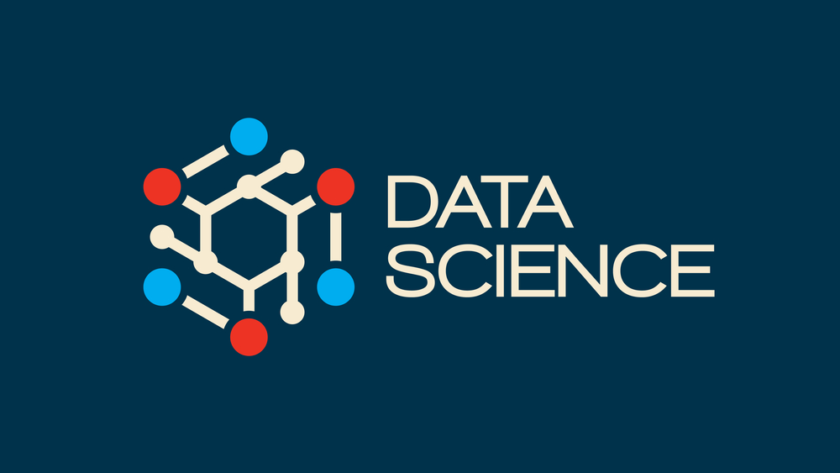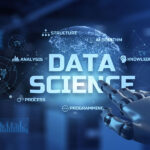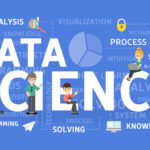In today’s fast-paced, data-driven world, data science has become an essential tool across industries, empowering businesses, governments, and individuals to make informed decisions. The ability to collect, analyze, and interpret vast amounts of data is transforming industries, enhancing customer experiences, and driving innovation. Data science is unlocking insights that were once hidden within massive datasets, allowing organizations to respond more quickly, predict future trends, and optimize operations.
In this article, we’ll explore the power of data science, its applications across various industries, and how it’s driving change by transforming insights into action.
1. What is Data Science?
Data science is an interdisciplinary field that uses scientific methods, algorithms, and systems to extract knowledge and insights from structured and unstructured data. It combines several disciplines, including mathematics, statistics, computer science, and domain knowledge, to analyze and interpret complex data sets.
Key components of data science include:
- Data Collection: Gathering raw data from various sources such as sensors, online platforms, surveys, and transactions.
- Data Cleaning and Preprocessing: Removing inaccuracies, handling missing values, and transforming data into a usable format.
- Data Analysis: Applying statistical and machine learning methods to analyze patterns, trends, and relationships within the data.
- Data Visualization: Presenting the results of data analysis through charts, graphs, and dashboards to communicate insights clearly.
- Predictive Modeling: Using historical data to predict future outcomes or trends.
The ultimate goal of data science is to turn raw data into actionable insights that can drive business decisions, improve operations, and solve real-world problems.
2. The Role of Data Science Across Industries
Data science is not confined to a single industry but has found applications in a wide range of fields, transforming traditional processes and practices. Let’s take a closer look at how data science is impacting different sectors.
2.1 Healthcare: Revolutionizing Diagnostics and Patient Care
In healthcare, data science is playing a vital role in improving patient care, streamlining operations, and advancing medical research. By analyzing vast amounts of health data, data scientists are uncovering patterns and correlations that can enhance diagnosis, treatment, and prevention strategies.
- Predictive Analytics for Disease Prevention: Data science is used to predict disease outbreaks and identify at-risk populations. Machine learning algorithms can analyze medical records, genetic data, and lifestyle factors to predict the likelihood of diseases like diabetes, cancer, or heart conditions, enabling early intervention.
- Personalized Medicine: Data science is contributing to personalized treatment plans by analyzing patient data and tailoring treatments to individual needs. This has led to more effective treatments, fewer side effects, and better patient outcomes.
- Medical Imaging and Diagnostics: Machine learning and computer vision techniques are being used to analyze medical images, such as X-rays, MRIs, and CT scans, to detect anomalies like tumors, fractures, or infections with greater accuracy than traditional methods.
By harnessing the power of data, healthcare providers are not only improving clinical outcomes but also reducing costs, enhancing operational efficiency, and providing more targeted care.
2.2 Retail: Enhancing Customer Experience and Operational Efficiency
Data science has significantly reshaped the retail industry, allowing companies to better understand consumer behavior, optimize supply chains, and deliver personalized experiences. Retailers are using data-driven insights to stay competitive in an increasingly crowded market.
- Personalized Marketing: Retailers leverage customer data to create targeted marketing campaigns. By analyzing customer purchase histories, browsing behaviors, and demographics, businesses can recommend products that resonate with individual preferences, increasing sales and customer satisfaction.
- Inventory Management: Machine learning algorithms help retailers predict demand patterns and optimize inventory levels. This reduces the risk of overstocking or understocking, ensuring that products are available when customers need them while minimizing waste.
- Price Optimization: Data science models are used to determine the optimal pricing strategy based on factors such as competitor pricing, customer demand, and seasonality. Dynamic pricing tools adjust prices in real-time, maximizing profit margins and ensuring competitiveness in the market.
Data science has allowed retailers to not only improve their bottom line but also create a more engaging, personalized shopping experience for customers.
2.3 Finance: Improving Risk Management and Fraud Detection
The finance industry relies heavily on data science to manage risks, optimize investment strategies, and detect fraudulent activities. Financial institutions use data-driven models to assess creditworthiness, predict market trends, and ensure compliance with regulations.
- Fraud Detection and Prevention: Data science is a powerful tool in identifying unusual patterns of activity that may indicate fraudulent behavior. Machine learning models can analyze transaction data in real time, flagging potentially fraudulent transactions and minimizing losses.
- Credit Scoring and Risk Management: Financial institutions use data science to assess the creditworthiness of individuals and businesses. By analyzing a variety of factors—such as credit history, spending patterns, and financial behavior—algorithms can predict the likelihood of loan repayment and help mitigate financial risk.
- Algorithmic Trading: Data science powers algorithmic trading strategies that analyze market data and execute trades based on predefined rules. These systems can process vast amounts of data in real time, enabling traders to capitalize on fleeting opportunities and optimize their portfolios.
In finance, data science has helped organizations reduce fraud, minimize risks, and make smarter, data-driven investment decisions.
2.4 Manufacturing: Optimizing Processes and Reducing Costs
Data science is transforming the manufacturing industry by improving production efficiency, reducing downtime, and enhancing product quality. With the advent of smart factories and the Internet of Things (IoT), manufacturers can collect vast amounts of data from machines, sensors, and production lines.
- Predictive Maintenance: By analyzing sensor data from machines, data scientists can predict when a machine is likely to fail, enabling manufacturers to perform maintenance before a breakdown occurs. This reduces costly downtime and extends the lifespan of equipment.
- Supply Chain Optimization: Data science helps manufacturers optimize their supply chains by forecasting demand, identifying bottlenecks, and reducing inventory costs. Machine learning models can also identify inefficiencies in production and suggest process improvements.
- Quality Control: Data science is used to monitor product quality in real time. By analyzing data from sensors and production lines, manufacturers can detect defects early in the process, reducing waste and ensuring high-quality products.
Data science is enabling manufacturers to become more agile, efficient, and cost-effective, while improving overall product quality and customer satisfaction.
2.5 Transportation and Logistics: Enhancing Efficiency and Safety
Data science is making significant strides in the transportation and logistics industry, where optimizing routes, reducing fuel consumption, and enhancing safety are top priorities.
- Route Optimization: By analyzing traffic patterns, weather data, and historical trends, data science models can predict the most efficient routes for delivery trucks and vehicles. This helps businesses save time and reduce fuel costs while improving customer satisfaction with faster deliveries.
- Fleet Management: Data science is used to monitor the health of vehicles, track maintenance schedules, and improve fleet performance. Predictive analytics can identify issues before they become serious problems, leading to fewer breakdowns and lower operating costs.
- Autonomous Vehicles: Data science is playing a crucial role in the development of self-driving vehicles. Machine learning algorithms help vehicles interpret real-time data from sensors, cameras, and GPS to navigate roads and make decisions in dynamic environments, making transportation safer and more efficient.
In transportation, data science is driving improvements in route efficiency, fuel consumption, and safety, reducing costs while enhancing customer experience.
3. Transforming Insights Into Action
The true power of data science lies in its ability to transform raw data into actionable insights that can guide decision-making and drive change. But having access to data is not enough—it’s how businesses and organizations leverage that data that truly makes a difference.
3.1 Data-Driven Decision Making
By analyzing data from various sources, businesses can make more informed decisions that are based on facts, rather than intuition or guesswork. For example, a company can use data science to analyze customer feedback and purchasing behavior, allowing it to make data-driven decisions about product development, marketing campaigns, and pricing strategies.
3.2 Real-Time Analytics and Agile Responses
Data science enables real-time analytics, which empowers businesses to respond quickly to emerging trends or issues. In industries like e-commerce, retail, and finance, where conditions can change rapidly, having access to real-time insights is critical for staying competitive. For instance, a retailer may adjust inventory levels in response to unexpected demand spikes, or a financial institution may update risk models to account for market volatility.
3.3 Predictive and Prescriptive Analytics
Predictive analytics uses historical data to forecast future trends, allowing businesses to plan for upcoming changes in demand, market conditions, or consumer preferences. Prescriptive analytics goes one step further by providing actionable recommendations on how to respond to those predictions. Together, these analytics techniques empower organizations to take proactive steps to achieve their goals and avoid potential pitfalls.
4. The Future of Data Science
As technology continues to evolve, the role of data science is only expected to grow. The proliferation of big data, advancements in artificial intelligence (AI), and the widespread adoption of IoT devices will create even more opportunities for data scientists to uncover insights and optimize processes.
- AI and Automation: The integration of AI and machine learning with data science will enable even more powerful predictions and automation. AI-powered models will be able to analyze data faster and more accurately, allowing businesses to make real-time decisions that were previously impossible.
- Ethics and Privacy: As data science continues to evolve, so will the ethical and privacy concerns surrounding data collection and usage. Ensuring that data is collected, stored, and used responsibly will be a key challenge for businesses and regulators alike.
- Democratization of Data: The future will likely see an increased focus on making data science accessible to a wider audience. Tools and platforms that allow non-experts to leverage data science insights will enable more organizations and individuals to benefit from data-driven decision-making.
5. Conclusion: Harnessing the Power of Data Science
Data science is undeniably one of the most transformative forces in the digital age. It is enabling businesses to improve efficiency, optimize operations, and enhance customer experiences, all while driving innovation across industries. By turning raw data into actionable insights, data science empowers organizations to make smarter decisions, solve complex problems, and ultimately achieve their goals.
As the field continues to evolve, the potential of data science will only continue to expand, creating new opportunities for growth, efficiency, and innovation. For individuals, businesses, and governments alike, embracing the power of data science is not just an option—it’s an imperative.




